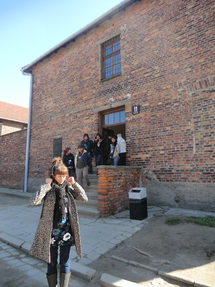 This is the most asked question since my return. People expect horrors. They expect emotion. They've heard that the birds never sing there, even to this day.
This is the most asked question since my return. People expect horrors. They expect emotion. They've heard that the birds never sing there, even to this day.
Websites endlessly recite the fact that it's the most haunted place on Earth, without once providing the ghost story to go with it. My friends know that I once fled Culloden, because I couldn't stand it. How could I then cope with Auschwitz-Birkenau?
I have to admit that the thought crossed my mind too. Particularly when my step faltered in approaching the main gate.
I'd already asked around amongst people whom I knew had previously visited Auschwitz. They gave me such a mismatch of emotions that I understood well enough that nothing can prepare you. It's no good assuming that you will feel in any particular fashion. Steven Spielberg once famously gave way to self-loathing, because he 'didn't cry buckets' after his tour. The simple fact is: there's no etiquette of emotion for a place like this.
None of which prepared me for how I felt at Auschwitz.
I stopped believing in it. I'm not entirely sure when it began, but I recall walking towards the gas chambers knowing it. The tour guide pointed out a huge gallows, where half a dozen people could be simultaneously hanged.
"No, they weren't." I thought, dismissing it with a glance. It didn't happen.
Suddenly all that research went. The eye-witness statements, the photographs, the testimonies of the Nuremberg Trials, everything fled my rationality like so much dust. I'd looked Eva Mozes Kor in the eye - and many others after her - yet all that had gone. Beyond consideration.
In its place was hatred for the tour guide. The only academia my mind could throw up was the names of revisionists, like David Irving. I became utterly determined to read again all that they'd said about the Holocaust being a World War II fiction. It seemed feasible. None of this had happened.
Then I turned my head and we were walking alongside the Roma museum. The sight of it hit me like something physical. As a great cerebral rush, my emotions caught up with all I'd studied for my dissertation. Yet not without any coherent facts.
"Were the Roma here?" I gushed out. I think I meant in that particular barracks, though I knew damn well that the gypsies were all in Auschwitz II. I wonder, in retrospect, whether the question was more generic. My rational self trying to tear through the sneering denial.
The tour guide launched into a sales pitch about Porajmos tours being separate. I'd signed up for the three hour general tour of Auschwitz-Birkenau. The Roma are not covered on that one. There's too much else to fit in. But I could buy another tour from the main office.
I understood perfectly. The Roma were not at Auschwitz. Then I went into the gas chamber.


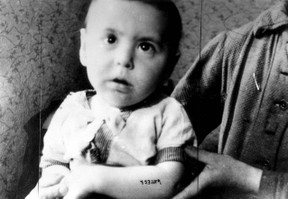 The little Roma boy did not survive Auschwitz-Birkenau. Few as young as him did.
The little Roma boy did not survive Auschwitz-Birkenau. Few as young as him did.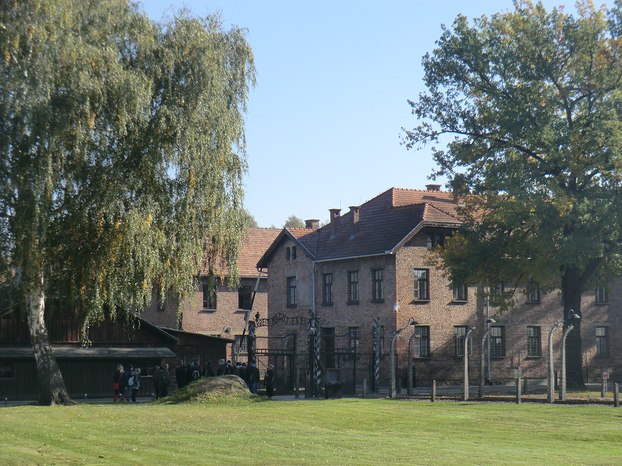

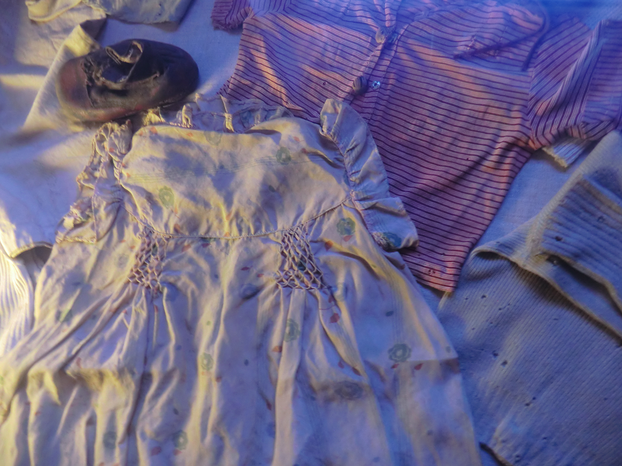
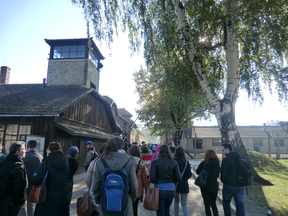 My friend and I booked our Auschwitz-Birkenau tour with Escape2Poland. They were an excellent company.
My friend and I booked our Auschwitz-Birkenau tour with Escape2Poland. They were an excellent company.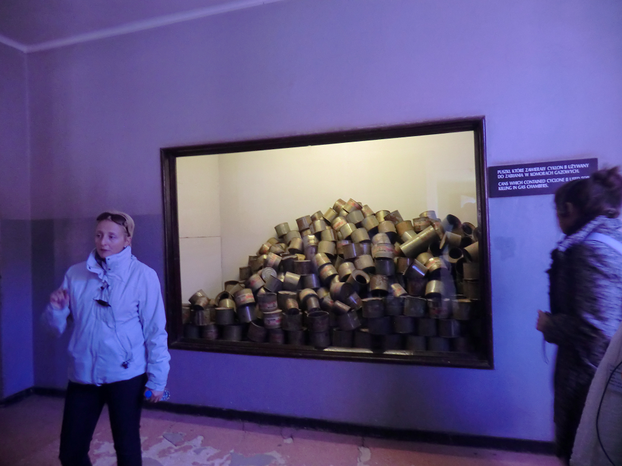
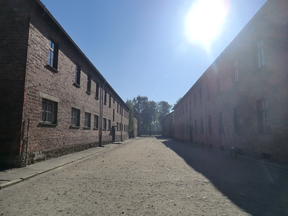 Krakow, and Auschwitz in particular, have been dubbed a Dark Disneyland. So much of the history is terrible, yet the tourists flock through those doors.
Krakow, and Auschwitz in particular, have been dubbed a Dark Disneyland. So much of the history is terrible, yet the tourists flock through those doors.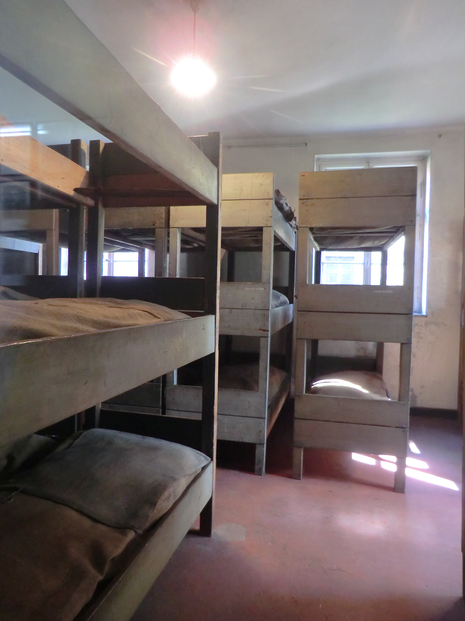




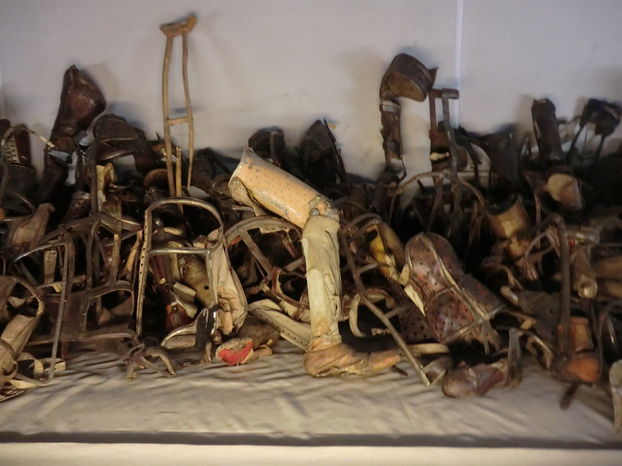
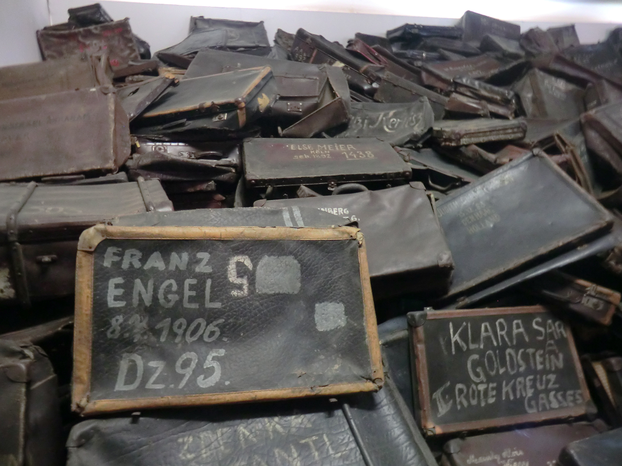
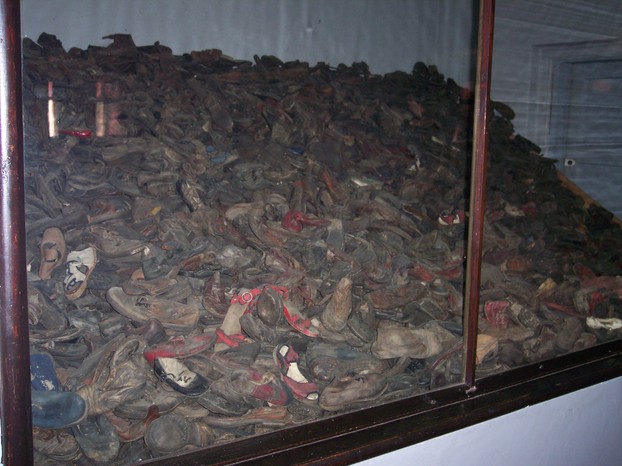
 This is the most asked question since my return. People expect horrors. They expect emotion. They've heard that the birds never sing there, even to this day.
This is the most asked question since my return. People expect horrors. They expect emotion. They've heard that the birds never sing there, even to this day.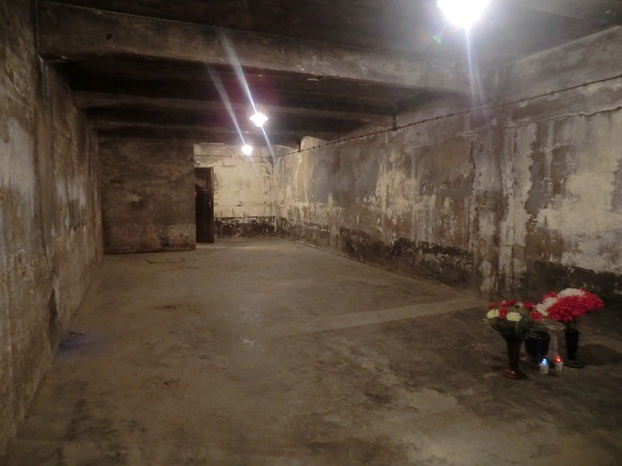
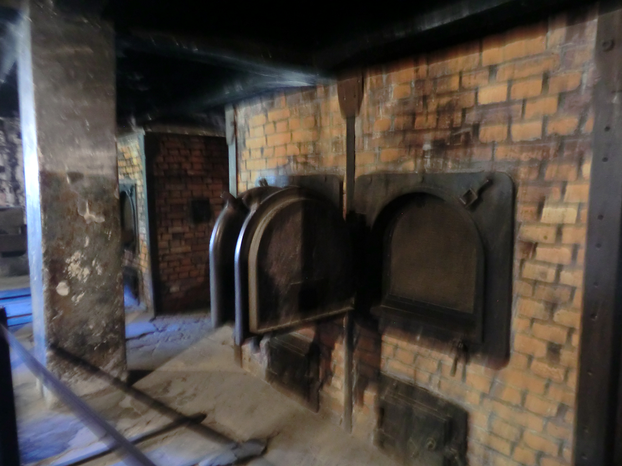
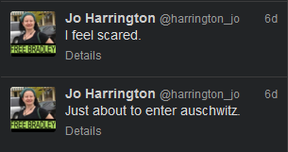 Fortunately for my state of mind, there was a fifteen minute break in our tour at this point.
Fortunately for my state of mind, there was a fifteen minute break in our tour at this point.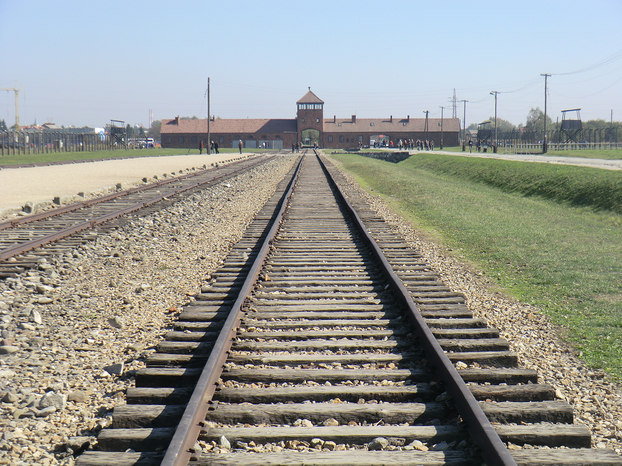
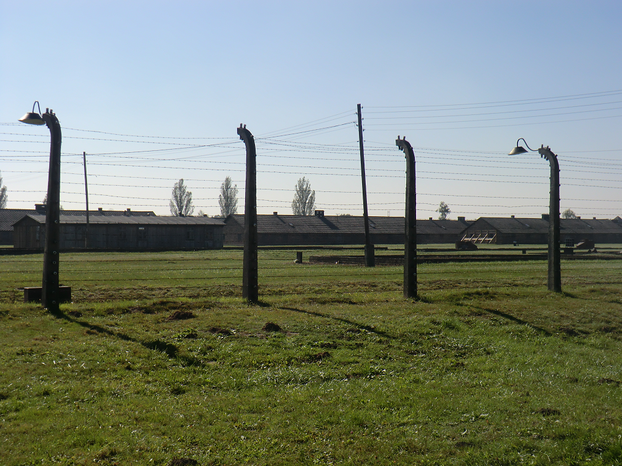
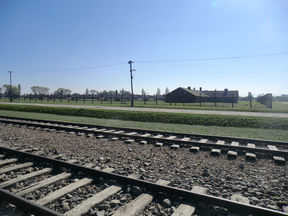 Auschwitz II was built over the top of the village of Birkenau. It's the biggest death camp within the complex. It is here that you will see the wooden barracks so favored by Hollywood.
Auschwitz II was built over the top of the village of Birkenau. It's the biggest death camp within the complex. It is here that you will see the wooden barracks so favored by Hollywood.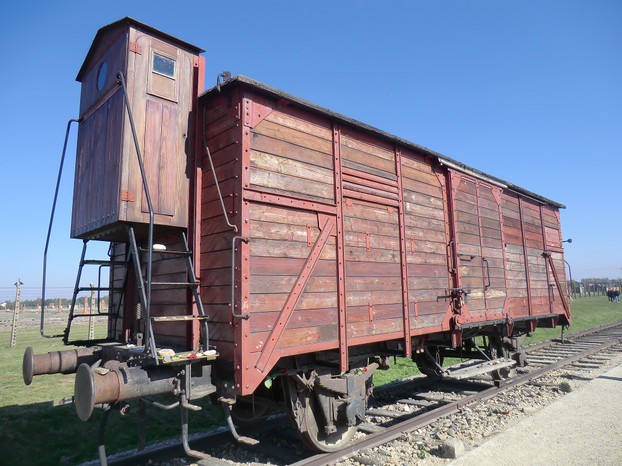
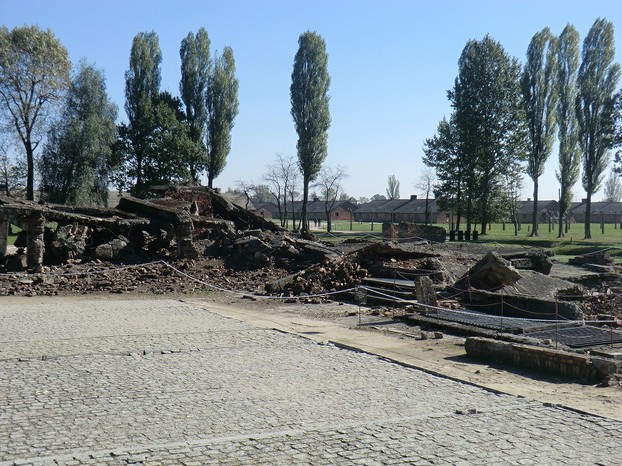
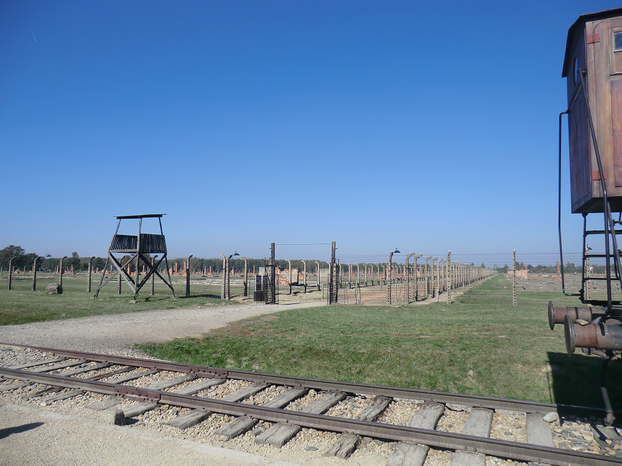



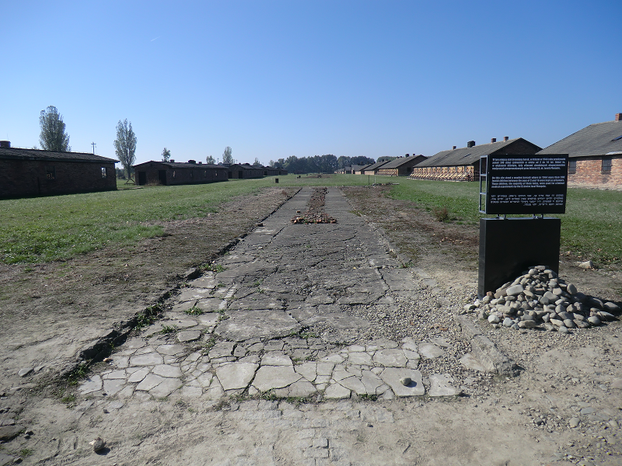
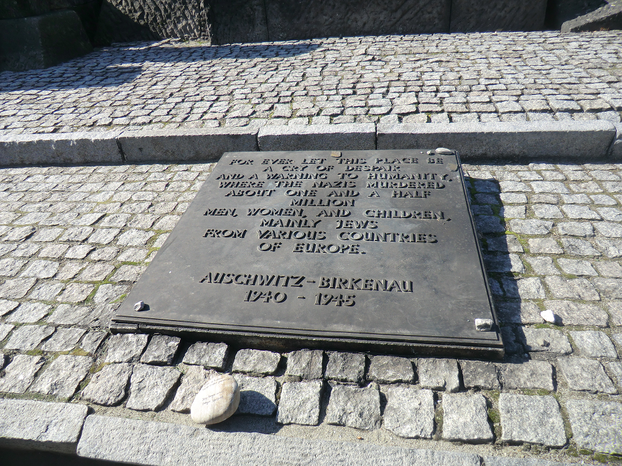




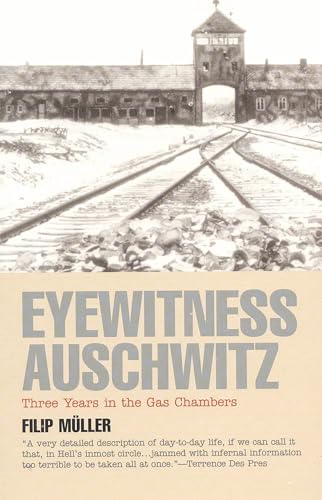

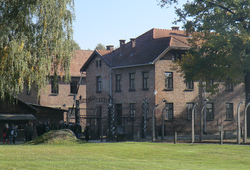

 St Tydecho's Churches in West Waleson 09/03/2014
St Tydecho's Churches in West Waleson 09/03/2014
 Goodies for an Outlander Premiere Partyon 03/06/2015
Goodies for an Outlander Premiere Partyon 03/06/2015
 Holocaust Memorial Day Interview with Rainer Höss, Grandson of Rudolf Architect of Auschwitzon 01/24/2015
Holocaust Memorial Day Interview with Rainer Höss, Grandson of Rudolf Architect of Auschwitzon 01/24/2015
 Romantic Valentine Gifts for an Outlander Fanon 01/16/2015
Romantic Valentine Gifts for an Outlander Fanon 01/16/2015

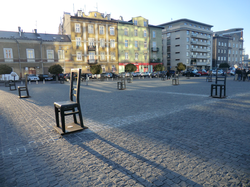
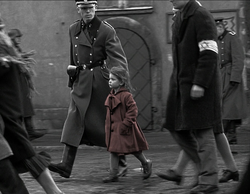
Comments
I also saw this camp this year with http://www.krakowdiscovery.com/tour/A...... what can i say, everybody should visit this place becasue this is a fact how many people died from German hands.
I also saw this camp this year with http://ww w.krakowdiscovery.com/tour/Auschwitz_... what can i say, everybody should visit this place becasue this is a fact how many people died from German hands.
Oh James! You're suffering from what my generation know as the 'one more dead soldier' syndrome, from a line in 'Fuel to the Flame' by Joolz. It's worth looking that one up. It's kept me sinking under for the best part of 20 years.
The trick is to understand that you can't save the world on your own. You can only do your bit and that gets added to the bit that I'm doing too, and the next person, and the next. Giving in to despair or fury means that we can no longer function. We either have to implode or else push it all away for fear of becoming subsumed by all the pain and hatred. Hence no longer doing our bit.
'... and what's one more dead soldier in the endless scheme of things? It's one pair more of open eyes which are shut and cannot see in the kingdom of the blind, and that would never do. it's a long war that we're fighting against ourselves.' Joolz 'Fuel to the Flame'
It's neither fists nor despair which helps those who need us. It's ice cold anger channeled into efficiency, targeted, remote and precise. Then pause every so often to break, because you need that too.
There are not many people left in the world who are capable of empathy. I must confess that I have already given up on the human race so there is no point in me visiting Auschwitz to be reminded of anything. I have seen my parent's generation do nothing but go to parties during genocides nearly as large as the holocaust and watched my own generation do the same. I cannot feel anything other than despair and rage. There is nothing in life that I find good. There is a massacre at the other side of the world right now as I type this. I'm seriously considering taking a one way trip to that area and have no intention of returning home alive.
I look forward to reading them. :)
Hi Jo,
I am just finishing off a contract that brought up some of these topics for me. A soon as i is wrapped up I will post a bunch of related articles.
Jo - Sorry! I don't know how I missed your comment.
Yes, this is the reason that Suite101 has so many articles about the Porajmos by me. It's a subject that has stayed with me for a long time. I'm glad that I've been able to raise awareness.
Pastor Paul Schneider is always a good person to keep in mind.
Thank you for sharing your experiences here. They are hard places to visit, but we all really should.
I visited Buchenwald 10 years ago but have never been able to write about it. My husband has a particular interest in Sobibor. That's a pretty high priority trip at some point. Like you with young Fritz, I had someone in mind at Buchenwald; Pastor Paul Schneider. The birds don't sing at Buchenwald, where the ghosts are thick and babble noisily to those who listen. I suspect Sobibor will be the same. Thank you Jo.
Hi Jo,
Reading this article has placed a lot of your other articles in context for me. Thank you! You have worked very hard over a long period of time on this topic. What you have achieved is eye opening, Jo